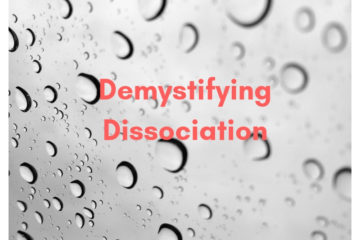
EMDR (Eye Movement Desensitisation and Reprocessing) is a proven psychotherapy to help you process and heal from past adverse and traumatic experiences that affect your psychological wellbeing.
The therapy involves using side to side eye movements combined with talk therapy in a specific and structured format.
EMDR helps you process the negative images, emotions, beliefs and body sensations associated with stuck traumatic memories.
Your therapist walks beside you as the EMDR kickstarts your natural healing and recovery process after your trauma. After a while you begin to see things from a different perspective and this relieves the symptoms that you were suffering.
By the end of the therapy you will be able to look at the memory without any of the distress that used to accompany it. It will just be something that happened to you, that is now firmly in the past.
HOW DOES EMDR WORK?
The mind can often heal itself naturally, in the same way as the body does. Much of this natural coping mechanism occurs during sleep, particularly during rapid eye movement (REM) sleep. The psychologist Francine Shapiro developed Eye Movement Desensitisation and Reprocessing (EMDR) in 1987, using this natural process in order to successfully treat Post-traumatic Stress Disorder (PTSD). Since then, EMDR has been used to effectively treat a wide range of mental health problems.
WHAT IS TRAUMA?
Trauma, is an adverse, or series of adverse events that are so frightening they overwhelm the person to the point that they are unable to process what has happened in a healthy way.
Instead your natural coping mechanism can become overloaded. This overloading can result in disturbing experiences remaining frozen in your brain or being “unprocessed”. Such unprocessed memories and feelings are stored in the limbic system of your brain in a “raw” and emotional form, rather than in a verbal “story” mode. This limbic system maintains traumatic memories in an isolated memory network that is associated with emotions and physical sensations, and which are disconnected from the brain’s cortex where we use language to store memories. The limbic system’s traumatic memories can be continually triggered when you experience events similar to the difficult experiences you have been through. Often the memory itself is long forgotten, but the painful feelings such as anxiety, panic, anger or despair are continually triggered in the present. Your ability to live in the present and learn from new experiences can therefore become inhibited.
EMDR helps create connections between your brain’s memory networks,enabling your brain to process the traumatic memory in a very natural way.
What is an EMDR session like?
EMDR taps in to your body’s natural healing ability.After a thorough assessment, you will be asked specific questions about a particular disturbing memory. Eye movements, similar to those during REM sleep, will be recreated by simply asking you to watch the therapist’s finger moving backwards and forwards across your visual field. Sometimes a bar of moving lights or headphones is used instead. The eye movements will last for a short while and then stop.You will be asked to report back on the experiences you have had during each of these sets of eye movements. Experiences during a session may include changes in thoughts, images, feelings and bodily sensations.

